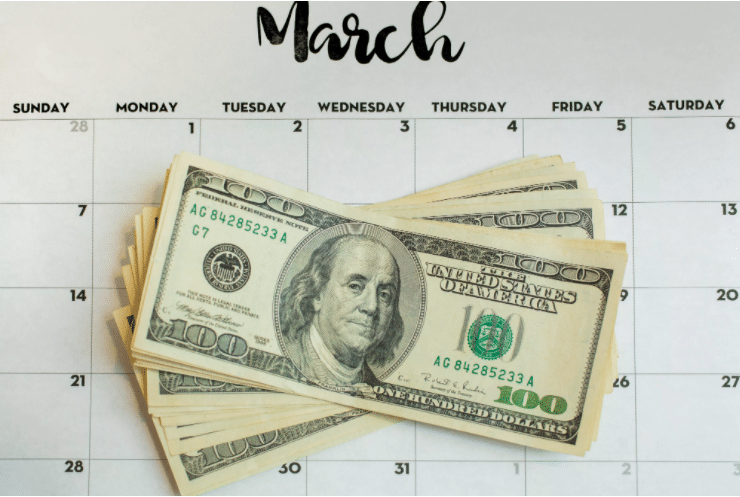When the IRS could send new stimulus checks, if the final bill passes this week.
The official passage of the stimulus bill triggers a domino effect on when the IRS can start sending checks. But your personal timeline to receive the $1,400 stimulus payment hinges on more. Here’s what could affect the arrival of your payment.Stimulus checks are getting closer, but you still want to know when yours will arrive in your hands.
Sarah Tew/CNET
The House and Senate passed the $1.9 trillion stimulus bill, so isn’t it final yet? And when will the IRS and Treasury send those $1,400 stimulus checks (estimate your total here)? The situation is complicated (more below), but the bottom line is that the House plans to pass the amended COVID-19 relief bill Tuesday, with President Joe Biden signing it into law before March 14. After that, the IRS can rev up its plan to send the third stimulus payments.
However, processing and sending those stimulus checks for up to $1,400 per person could be complicated, too. For a start, it’s the middle of tax season and the IRS is already in the midst of working through direct deposit tax returns while also wading through a backlog from last year’s tax claims. On top of that, the IRS will have a new stimulus check equation it will have to follow, since the third check would impose a firm income limit to “target” the new checks.
The good news is that Biden has said the checks will start to arrive in March. But the agency could take time to work through every eligible recipient. There’s also the question of which stimulus payment priority group you’re in — that could push back your check by weeks, and despite your best efforts, you may not get a choice if your stimulus payment arrives in the first wave or one of the last. Some people may also find they have to wait months to receive all their stimulus money, if any problems arise, including from the 2019/2020 tax confusion. We’ll walk you through what we know. This story was updated recently.
Possible dates your stimulus check could arrive
First things first. The date the IRS begins sending the initial wave of stimulus payments may not square up with the date you actually receive your money in your bank account or in the mail. Remember, it takes time for the IRS to process the well over 100 million payments expected in this third round of checks and tiny errors could cause a delay in you receiving your full or partial payment.
If the bill becomes law by March 14 — the Democrats’ self-imposed deadline — it’s almost guaranteed that the first batch of payments will begin to go out before April 1. Direct deposit recipients would be the first to receive a check, followed by staggered start dates for physical checks and EIP cards.
But that’s only for the dates the IRS will begin to send checks. It could take weeks for the IRS to process every group’s funds and more time for the transactions to go through, especially if you’re issued a paper check or EIP card. Any additional complication could delay your payment. The schedule below reflects our best guesses, based on the IRS’ timeline for the $600 stimulus check.
NEXT STIMULUS CHECK: POTENTIAL DELIVERY DATES
| Stimulus check passes Congress | Tuesday, March 9 | Tuesday, March 9 |
|---|---|---|
| Stimulus bill signed into law | Wednesday, March 10 | Saturday, March 13 |
| First direct deposit check sent | Week of March 17 | Week of March 22 |
| First paper checks sent | Week of March 24 | Week of March 29 |
| First EIP cards sent | Week of March 31 | Week of April 5 |
| IRS deadline to finish sending checks | Dec. 31, 2021 | Dec. 31, 2021 |
| Claims for missing stimulus money open | Likely 2022 | Likely 2022 |
What are the 3 main payment priority groups?
What we learned from the first two checks is that how you get your stimulus money often dictates when you get it.
- Direct-deposit recipients: Typically got their stimulus money in the first wave. But both times there were issues involving deposits going to temporary accounts that were rejected by banks. In some cases, these people got paper checks or EIP cards instead, or had to wait for the issue to resolve.
- Paper checks: This is the payment type the IRS sent out second. This method can take weeks to arrive by mail, but the check can be deposited or cashed right away.
- EIP cards: This payment type arrives as a prepaid debit card you must activate online to use. The IRS issued EIP cards last, delaying receipt for this recipient group by weeks.
How could your payment group change?
Yes. With the second stimulus checks, the IRS told CNET in January that some people who received a physical check or EIP card the first time may have been paid by the other method the second time around. And, anecdotally, we learned of people who received direct deposit payments the first time finally getting an EIP card in the mail — and not an electronic bank transfer — weeks after the IRS tool said the payment was issued.
Watch this: Stimulus check No. 3: What you need to know
2:59
While you won’t have the final say in how you get your payment, we recommend signing up for direct deposit with the IRS when you submit your 2020 tax return, if you ordinarily file taxes. If you already have an account, make sure your details are correct. We also suggest you try to file your taxes quickly. While you can file an extension to submit your taxes later (you’d still have to pay taxes owed now) whether that will help or hurt you may get a little complicated.
The other payment groups loosely defined (by us) include Social Security beneficiaries who received payments a different way the first time if they’re part of the SSI or SSDI programs, and people with more complex scenarios that could lead to potential issues or holdups receiving their money. People in different child support situations are one example we’ve seen, as are people who are incarcerated and people with complex citizenship scenarios.
What’s the IRS cutoff for sending the third stimulus checks?
The Jan. 15 deadline for the second stimulus check approved in December was written into the text of the bill without explanation. Anyone who didn’t receive all or part of their second payment must claim it as part of the IRS’ Recovery Rebate Credit on their tax return to get the funds owed — even if they have nonfiler status and aren’t typically required to file taxes.
The latest Senate form of the bill (PDF) would give the IRS a Dec. 31, 2021, cutoff to complete sending out the third stimulus checks.
How could tax season impede stimulus check delivery?
Since a third stimulus check is likely to drop in the middle of tax season (taxes are due April 15), the IRS may have to calculate your total based on the most recent tax filing it has. That would be your 2020 taxes if you file early, or 2019 taxes if the check is ready before your tax return is. This could also disqualify some people from getting a third stimulus payment. (Learn more about some of the stimulus check exceptions and catches here.)
If you’re owed money, you might have to wait a year to claim it, until you file your 2021 taxes in 2022, according to the latest proposal (PDF) under consideration. Filing for a tax extension could also change your timeline in a way that could be different if the IRS were to extend the tax due date itself (we haven’t heard anything more about this).
By mid-March, tens of millions of Americans may have already received their tax refunds, which could make it tricky for the IRS to straighten out problems or redact refunds after issuing.
Quick tips that might help you get a stimulus check faster
There may be a few things you can do to help speed up receipt of a third payment, assuming the stimulus bill is approved. For example, signing up for direct deposit with your 2020 tax return would put you in the priority category for a third stimulus payment.
If you’ve moved recently, tell the IRS and USPS. Here are our other suggestions for how people can make it more likely they’ll get their checks faster. Note that there could be some changes to qualifications that may not apply to a possible third stimulus check.
Additional stimulus check details these 6 groups should know
Stimulus checks aren’t necessarily a one-size-fits-all situation. Here are our guides for:
- Older adults, people who are retired and veterans
- People who receive SSI or SSDI
- Other tax nonfilers
- Families with mixed-status citizenship
- Households with dependents, or people trying to understand if they’d receive their own check
- Families with child support situations
Here’s everything you need to know about stimulus checks, including what to do if you ran into problems with either of the first two payments.

